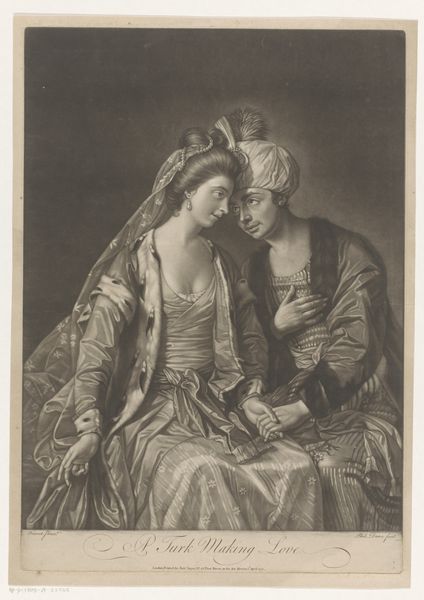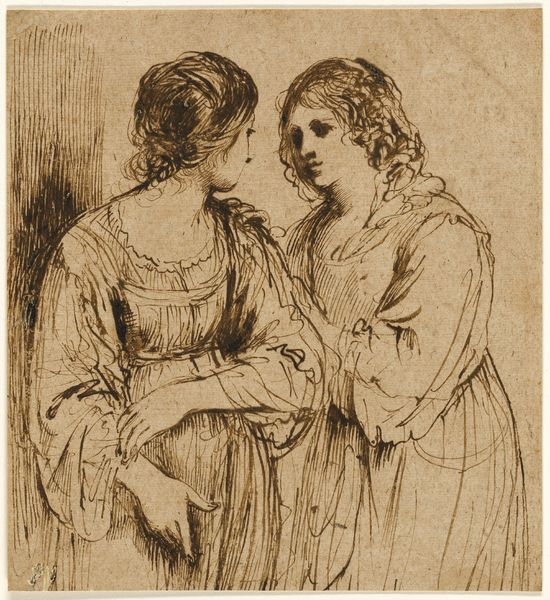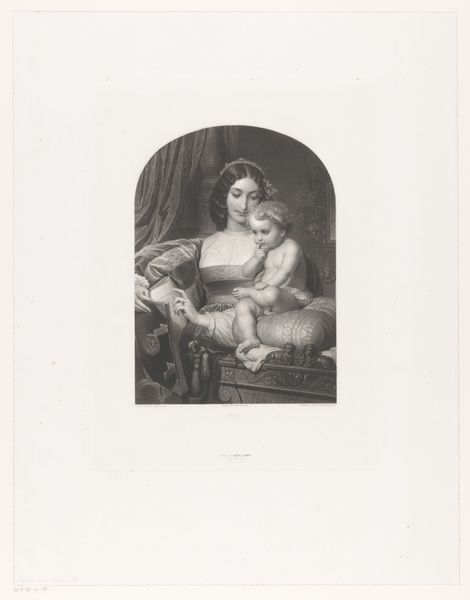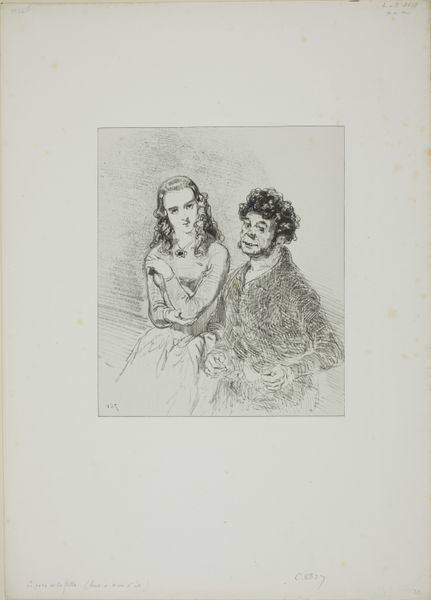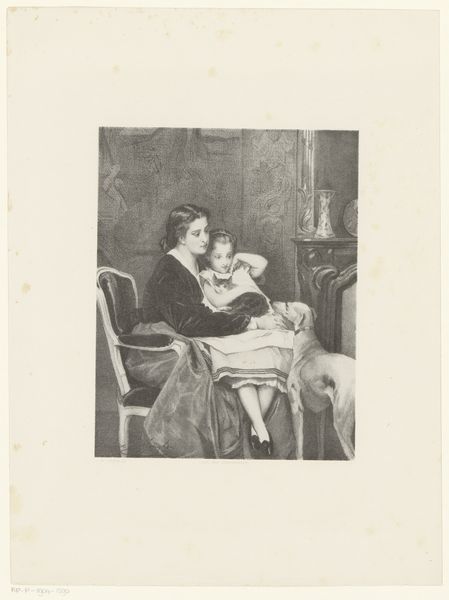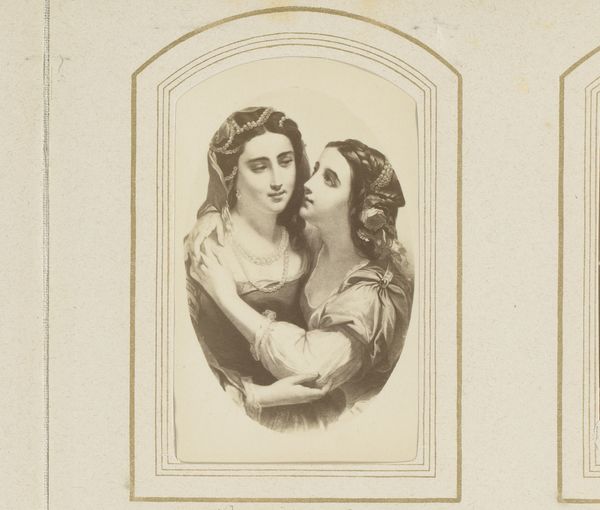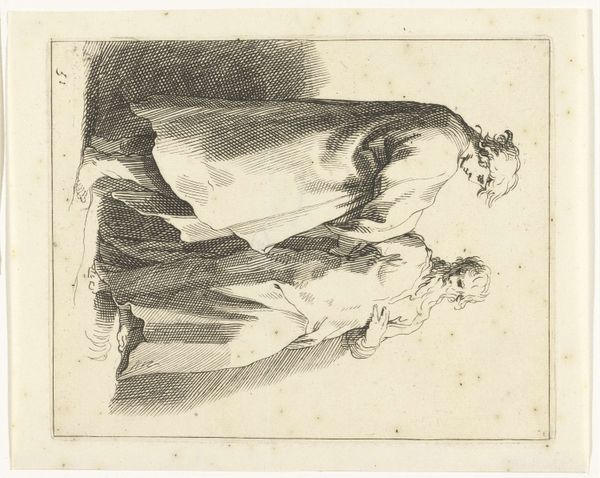
Dimensions: height 425 mm, width 310 mm
Copyright: Rijks Museum: Open Domain
Curator: This drawing presents us with a rather intimate scene. Johan Philip Koelman created this “Double Portrait of an Old and Young Woman” in 1885, using a detailed pencil technique. Editor: It's instantly striking. The contrast between the two women—youthful beauty beside weathered age— evokes a poignant reflection on time and mortality. There's a real gravity to their shared space. Curator: Absolutely. Koelman positions the younger woman slightly forward, perhaps symbolizing her active presence in the world, while the elder sits more passively, suggesting wisdom accumulated through years. Editor: The younger woman's adornments feel particularly telling—her decorative clothing almost proclaiming a connection to past traditions, and yet holding those very hands of time that seem to diminish it. Almost as if to reassure the older woman. Curator: That detail ties into the tradition of portraying women, linking beauty to societal expectations. The shawls on their heads could signify modesty, but their varying conditions also imply generational shifts in values and appearances. The artist subtly uses costume and age as signifiers of status and cultural memory. Editor: Yes, and there’s something almost unsettling in their hands joined as well. One gets a very sentimental reading about motherhood but there could also be subtle critique about aging's loss of control. This makes you think about the changing public expectations about a women's place at the turn of the century, how this tension plays out. Curator: Precisely, the way the women hold hands in front, may also imply dependency between generations—echoing societal structures prevalent during that era. This reinforces your reading as Koelman might be inviting his viewers to examine power dynamics. Editor: So, what initially reads like simple portraiture actually hides so much about 19th-century gender expectations, or perhaps how society frames aging women versus youthful women and women of means in particular? A seemingly simple snapshot speaks volumes. Curator: And highlights our ongoing relationship with those themes and the way artists capture generational narratives. Editor: Indeed, this artwork is another invitation to connect art and social history—something very significant and poignant from only the details held in the subjects' clasped hands.
Comments
No comments
Be the first to comment and join the conversation on the ultimate creative platform.
